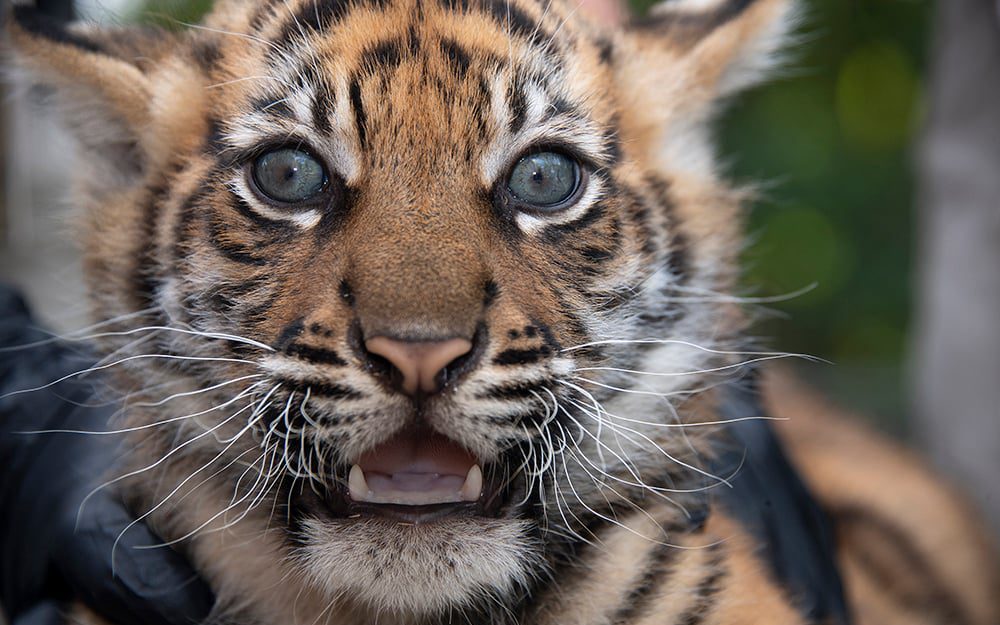Zoo Miami is the largest zoo in Florida and the only tropical zoo in the continental United States. The zoo is situated on over 750 acres (304 ha) in the southern part of Miami-Dade County, amidst the residential neighborhoods of Three Lakes, South Miami Heights, Palmetto Estates, and Richmond West.
Originally founded in 1948 as Crandon Park Zoo on Key Biscayne Island, the zoo was relocated in 1980 to the site of the former Richmond Naval Air Station, where it received a new name — Miami MetroZoo. Today, the zoo is known as Miami-Dade Zoological Park and Gardens, or simply Zoo Miami.
Zoo Miami, which has over 3,000 animals of about 500 species, offers visitors the opportunity to see over 100 exhibits located throughout the zoo, where they can stroll along a specially constructed 4-mile (6 km) path. Under the guidance of the communications director and an experienced team, Zoo Miami is an accredited member of the Association of Zoos and Aquariums (AZA).
History of Zoo Miami
The history of Zoo Miami began in 1948 when a traveling menagerie stranded near Miami left behind some animals — three monkeys, a goat, and two black bears—in exchange for repairs to their truck. These animals became the first residents of Crandon Park Zoo, which later supplemented its collection with lions, an elephant, a rhinoceros, and other animals, some of which were acquired after a circus went bankrupt. By 1967, the zoo had grown to over 1,200 animals and ranked among the top 25 zoos in the United States.
In the early 1980s, the zoo expanded significantly, and in 1982, an exhibit of African animals was opened, followed by a monorail in 1984 that transported visitors around the zoo until 2022. In December 1984, the "Wings of Asia" pavilion was opened — a 1.6-acre (0.6 ha) aviary with free-flying birds.
In 1992, Hurricane Andrew destroyed the zoo, damaging more than 5,000 trees and destroying the "Wings of Asia" pavilion, leading to the death of about 100 birds. Thanks to rapid recovery efforts, Zoo Miami reopened in December 1992. Over the following year, the park rehabilitated its animals and planted over 7,000 new trees to restore the forested cover.
Current Exhibits and Programs at Zoo Miami
Zoo Miami features five main themed exhibits: "Everglades Mission," "Asia," "Africa," "Amazon & Beyond," and "Australia." Of particular note is the "Everglades Mission" exhibit, where visitors can see alligators, American crocodiles, river otters, bears, Florida panthers, bald eagles, and pelicans. "Everglades Mission" also includes the Lostman's River Ride attraction — a slow boat ride that introduces visitors to the Everglades ecosystem.
The zoo is well known not only for its exhibits but also for active participation in conservation programs. The Zoo Miami Conservation Fund supports numerous environmental projects, including a butterfly conservation program aimed at restoring populations of rare species.
Asia
The Asian exhibit includes dozens of animals, such as Bornean orangutans, Asian elephants, Indian rhinoceroses, Sumatran tigers, gaurs, bantengs, lowland anoas, Arabian oryx, dromedary and Bactrian camels, Malayan tapirs, sun bears, hyena wolves, white-handed gibbons, siamang monkeys, and various Asian birds. The "Asian River Life" exhibit has been discontinued but previously recreated the environment of the Asian river. As of 2023, Zoo Miami was one of only two zoos in the U.S. where visitors could see a pair of black storks. The Asian section also includes animals not native to Asia, such as lions, African hyenas, wild dogs, aardvarks, addaxes, scimitar oryx, gerenuks, mangustave lemurs, crowned cranes, and Cuban crocodiles.
The icon of the zoo was the white tiger Karlita, which lived at the zoo for around two decades. Once, the orangutan exhibit housed a female Sumatran orangutan named Nonja, who was relocated from a Dutch zoo and was the oldest of her species until her death in 2007. Another notable animal was Karlita, a 21-year-old female white Bengal tiger, who lived at the zoo from 1994 to 2013.
The Asian exhibit is home to two Asian elephants: an older female named Nelly and a young male named Ongard.
Africa
The giraffe feeding station at Samburu allows visitors to interact with giraffes. The African section of the zoo features animals from various regions of Africa: giraffes, pygmy hippopotamuses, African elephants, black rhinoceroses, Grant’s zebras, giant elands, chimpanzees, western lowland gorillas, bongos, addax, oryx, and servals. To the north of the exhibit is the Oasis Grill dining area.


Australia
The Australian section showcases species from the Oceania region, including koalas, southern cassowaries, Australian wombats, and tree kangaroos. Nearby is the Sami Family Amphitheater with 800 seats, where animal shows, concerts, and cultural events are held.
Current Information:
Address: 12400 SW 152nd St, Miami, FL 33177, United States
Contacts: +1 (313)-577-2424
Operating Hours:
Mon-Sun 10:00-17:00 (10:00 AM - 5:00 PM)


